Abstract
We compared nodule initiation in lateral roots of Pisum sativum (L.) cv Sparkle and in a low-nodulating mutant E2 (sym 5). In Sparkle, about 25% of the infections terminated in the epidermis, a similar number stopped in the cortex, and 50% resulted in the formation of a nodule meristem or an emerged nodule. The mutant E2 (sym 5) was infected as often as was the parent, and it formed a normal infection thread. In the mutant, cell divisions rarely occurred in advance of the infection thread, and few nodule primordia were produced. Growing the mutant at a low root temperature or adding Ag+ to the substrate increased the number of cell divisions and nodule primordia. We conclude that, in the E2 line, the infection process is arrested in the cortex, at the stage of initial cell divisions before the establishment of a nodule primordium.
Full text
PDF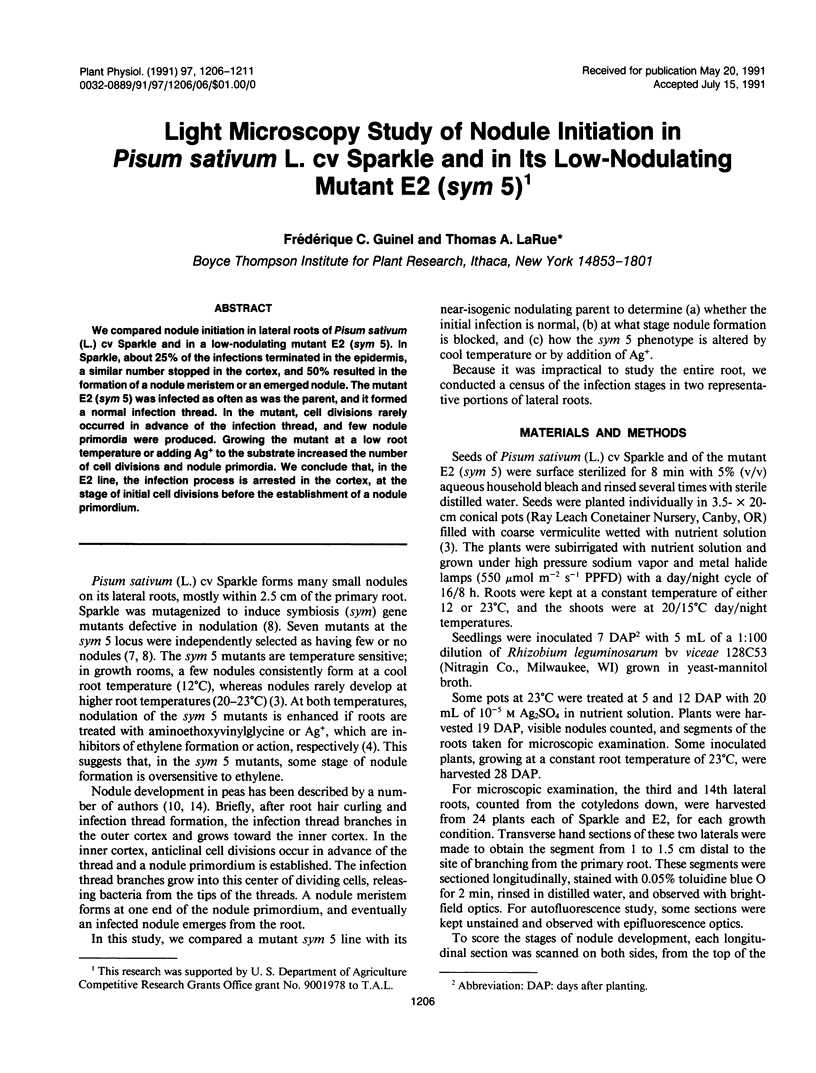

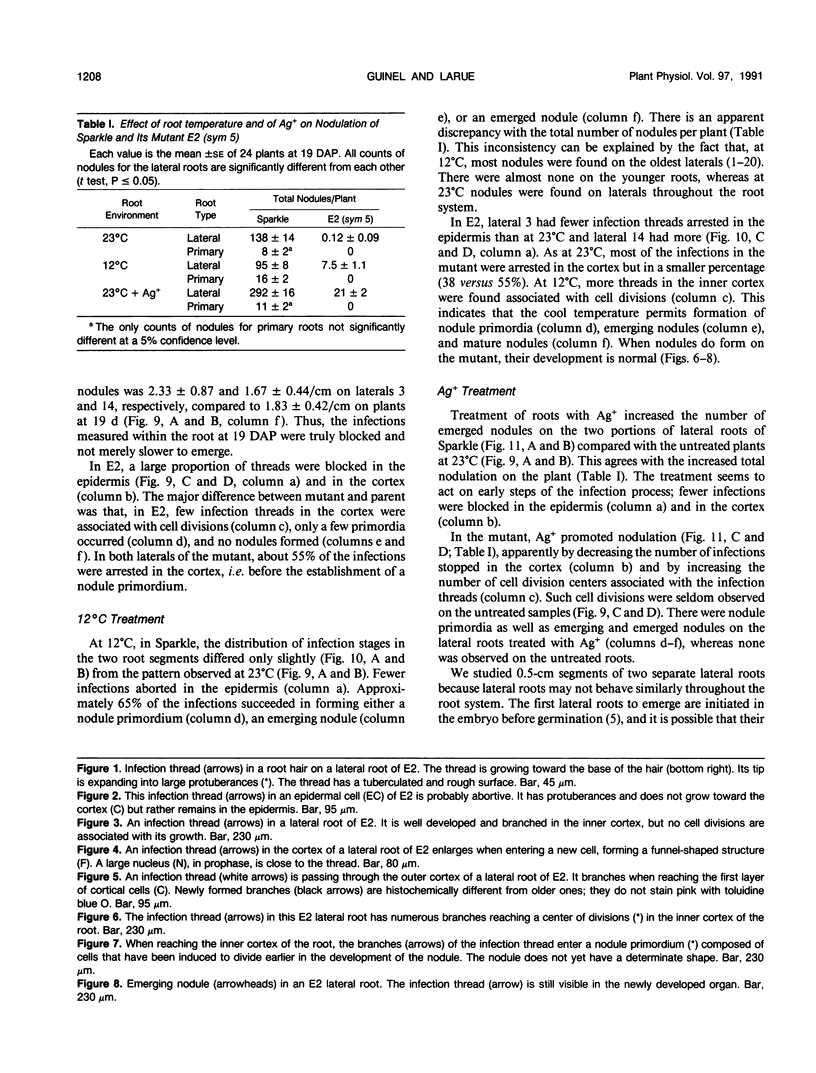
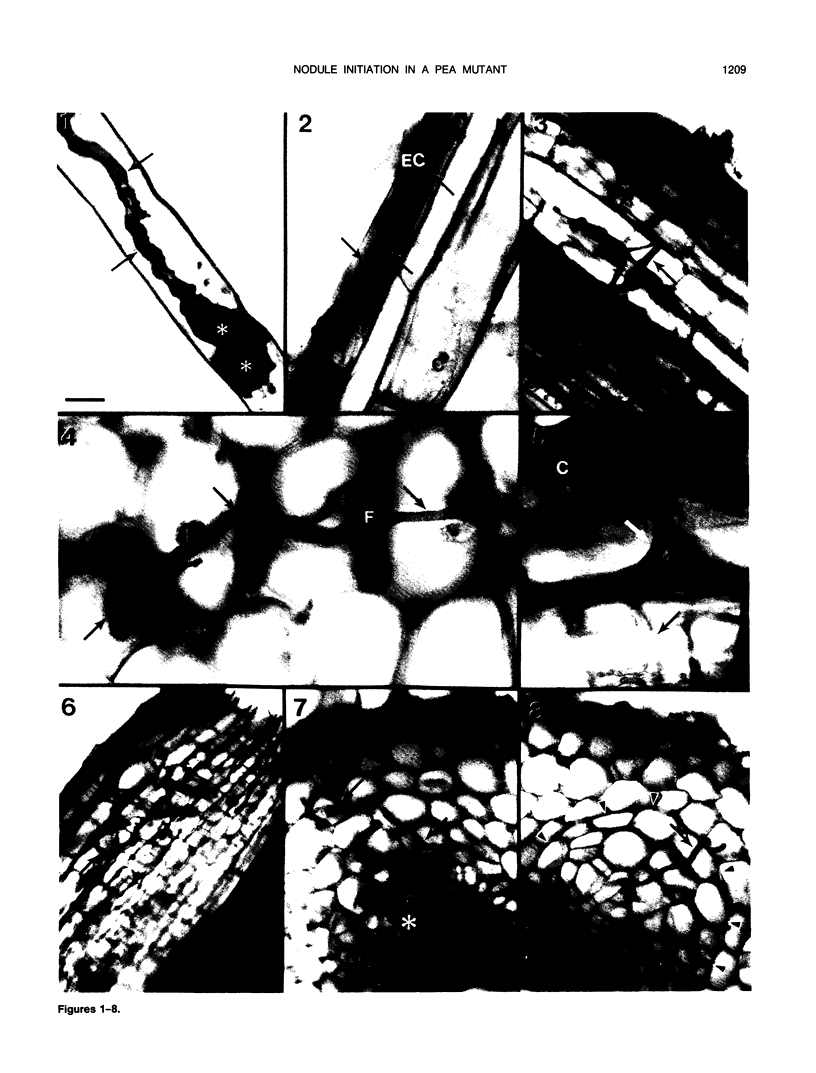
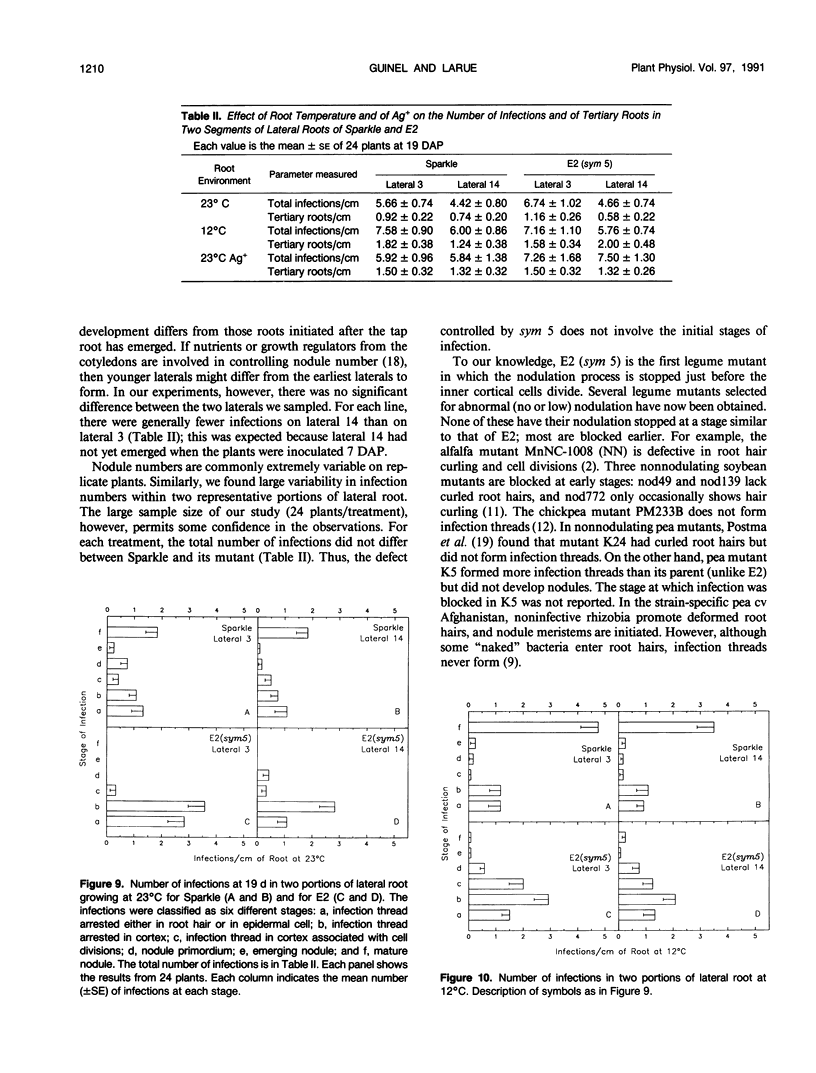
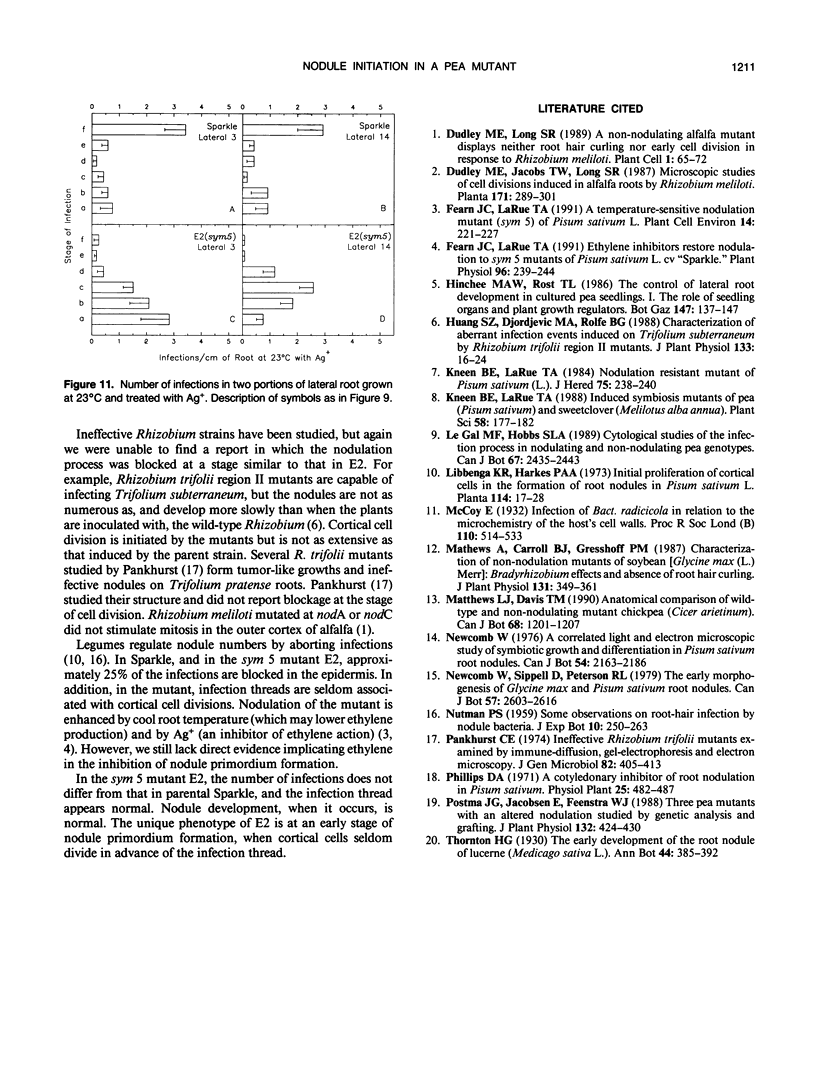
Images in this article
Selected References
These references are in PubMed. This may not be the complete list of references from this article.
- Dudley M. E., Long S. R. A non-nodulating alfalfa mutant displays neither root hair curling nor early cell division in response to Rhizobium meliloti. Plant Cell. 1989 Jan;1(1):65–72. doi: 10.1105/tpc.1.1.65. [DOI] [PMC free article] [PubMed] [Google Scholar]
- Fearn J. C., Larue T. A. Ethylene Inhibitors Restore Nodulation to sym 5 Mutants of Pisum sativum L. cv Sparkle. Plant Physiol. 1991 May;96(1):239–244. doi: 10.1104/pp.96.1.239. [DOI] [PMC free article] [PubMed] [Google Scholar]



